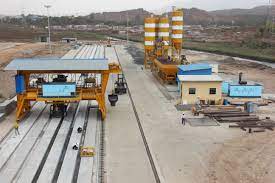When it comes to construction projects, choosing the right building material is crucial. Concrete is one of the most widely used materials in construction due to its durability and versatility. However, precast concrete has been gaining popularity in recent years as a superior alternative to on-site cast concrete. Precast concrete refers to concrete that is poured into pre-made molds off-site and delivered to the construction site, ready to be installed. In this article, we will discuss the advantages of using precast concrete for construction projects.
1. Cost-Effective
Using precast concrete for construction projects is cost-effective as it reduces on-site labor costs and saves time. Builders can order precast concrete panels, slabs, and panels to precise sizes and shapes, eliminating the need for on-site cutting and forming, which is both time-consuming and expensive. Manufacturers of precast concrete also use automated equipment to produce consistent quality, allowing builders to minimize material waste and minimize costs.
2. Durability
Precast concrete is known for its durable nature, ensuring the longevity of the structure it is used for. The precast concrete pieces are reinforced with steel and concrete mixes, making them resistant to fire, water damage, and extreme weather conditions. Moreover, the concrete mixture used in precast concrete contains fewer voids, improving the material’s resistance to harsh environmental conditions such as acid rain, chemical exposure, and freeze-thaw cycles.
3. Quality Assurance
Another great advantage of using precast concrete in construction projects is that the manufacturing process has a strict and extensive quality assurance procedure. The panels are produced in a controlled environment, and manufacturers can use various tests to ensure that the material quality meets the required specifications. The ability to control the ingredients, curing time, and testing process for precast concrete ensures that the finished product is of superior quality, reducing the need for costly repairs and maintenance in the future.
4. Fast installation
Precast concrete elements are pre-made to precise sizes, shapes, and thicknesses, which makes them ready for installation once they arrive at the construction site. This installation process requires less time and manpower than traditional on-site cast concrete. Additionally, precast panels and slabs require less reinforcement and formwork, reducing on-site labor costs and reducing the construction’s overall time.
5. Eco-friendly
Lastly, precast concrete is an eco-friendly alternative to traditional on-site cast concrete. The manufacturing process utilizes recycled materials, and the concrete is produced in a controlled environment, significantly reducing the waste sent to landfills. The durability of precast concrete also reduces the need for repairs and replacements, further reducing the environmental impact.
In conclusion, precast concrete offers several advantages over traditional on-site cast concrete, making it a superior choice for construction projects. Precast concrete is cost-effective, durable, has strict quality assurance procedures in place, allows for fast installation, and is eco-friendly, offering various benefits to both builders and the environment. Precast concrete is an excellent choice for any construction project that demands a quality, durable material that is easy to work with and cost-effective.




